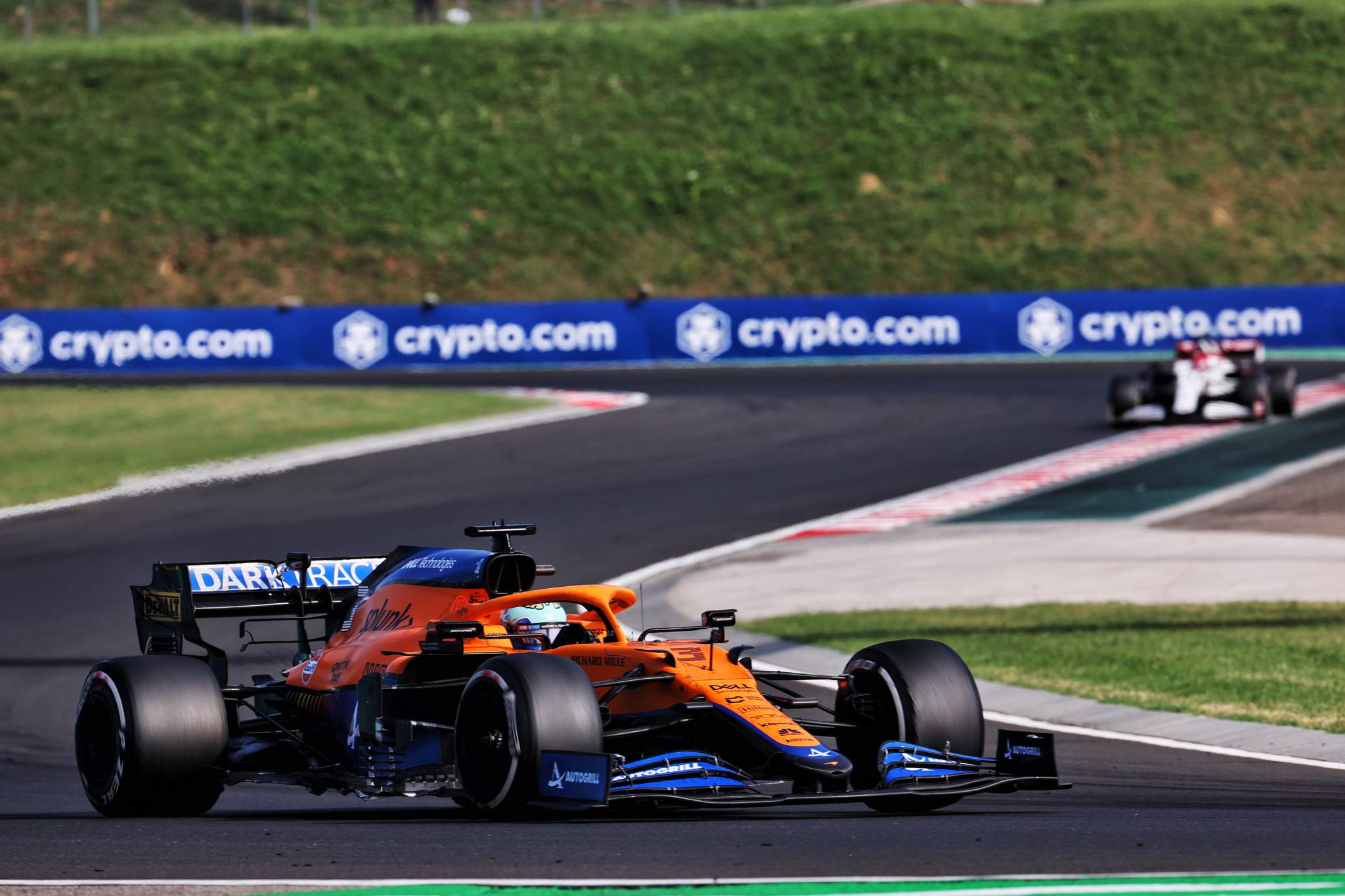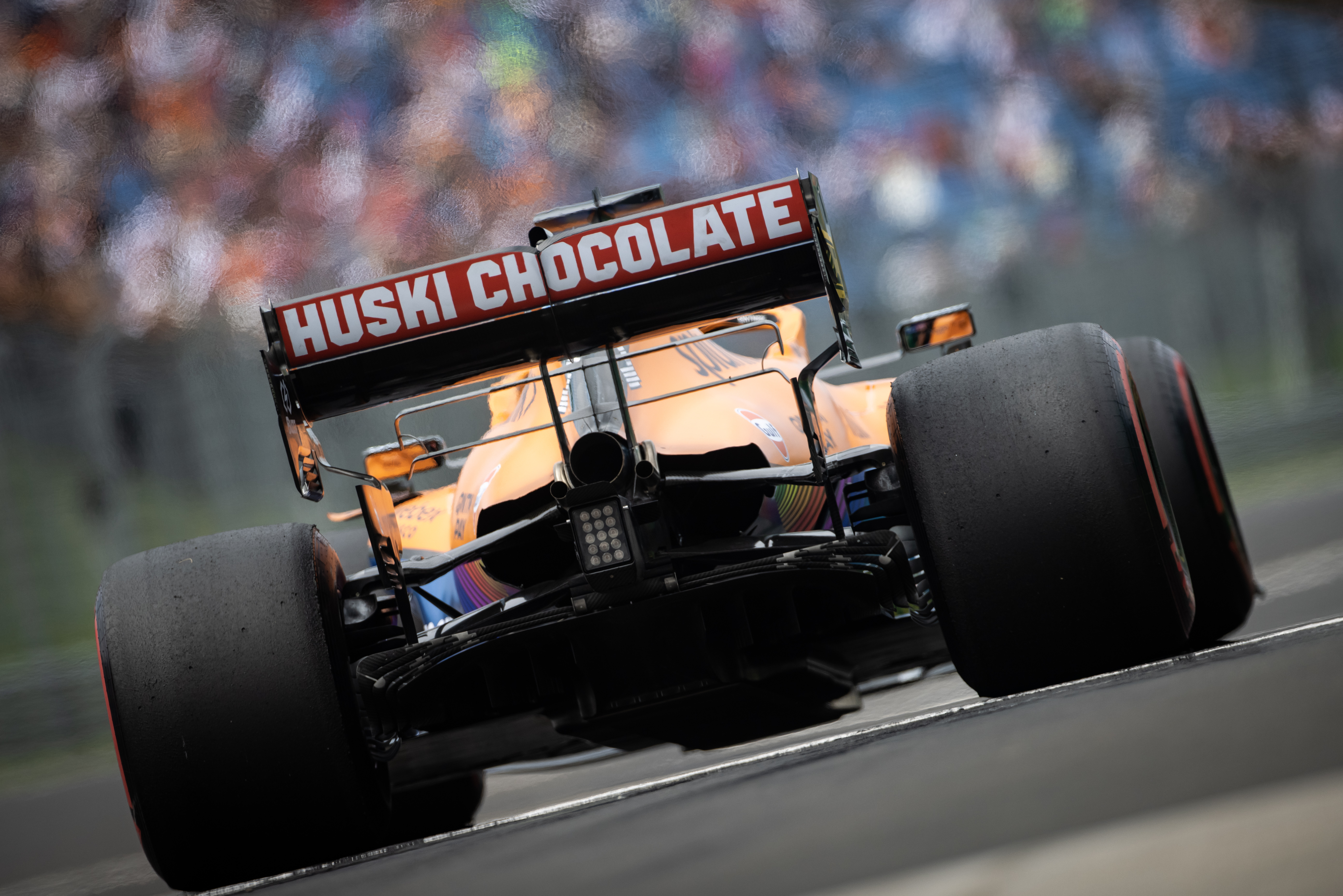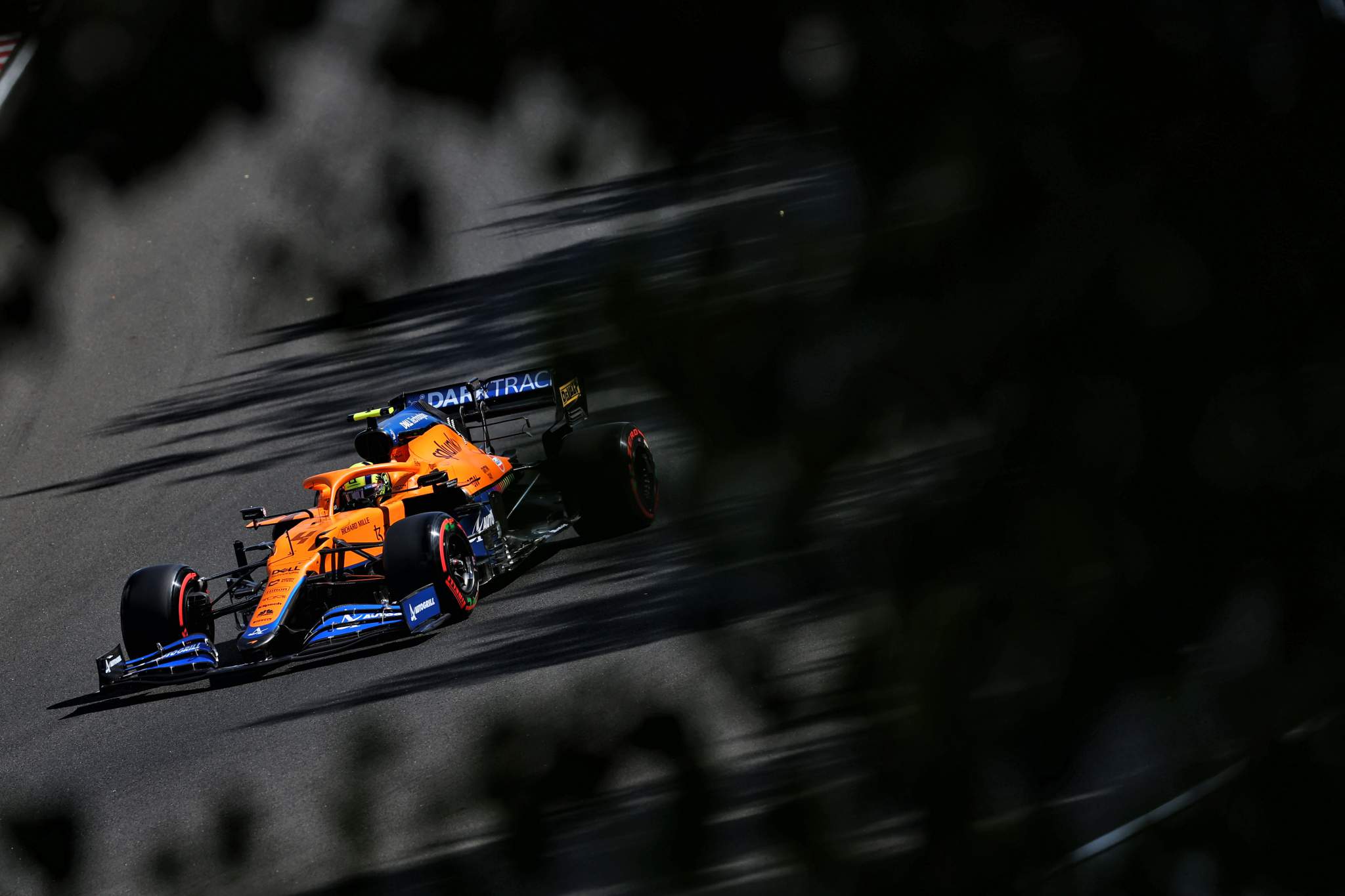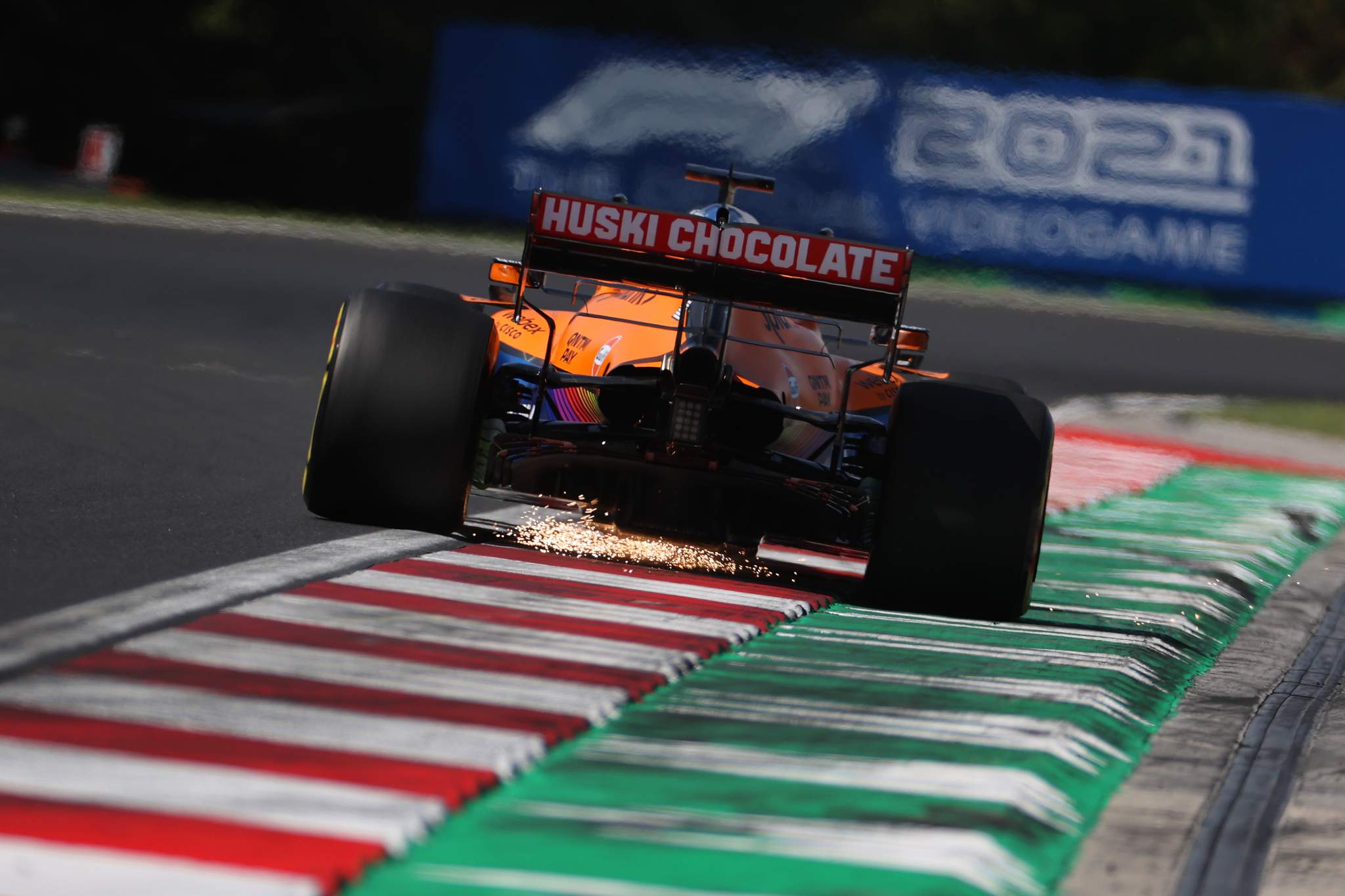As our writers continue to pick their highlights of The Race’s 2021 content, Assistant Editor Josh Suttill picks Edd Straw’s mid-season piece that explained Daniel Ricciardo’s struggles to adapt to the “peculiar” McLaren.
The esoteric driving-style demands of the McLaren MCL35M have been laid bare during the 2021 Formula 1 season by Lando Norris consistently producing superb performances while new team-mate Daniel Ricciardo has faced a long, hard and often fruitless slog to adapt.
Norris and former McLaren team-mate Carlos Sainz also found the car tricky to drive, but ultimately adapted well. But over his first 11 races as a McLaren driver, Ricciardo has been frustrated by attempting to implement a counter-intuitive driving style required by what he’s described as a “peculiar” car.
“I knew straight away it was a different beast,” said Ricciardo of the McLaren-Mercedes MCL35M.
“I’d be lying if I said the Renault wasn’t a different beast to the Red Bull, so they are all different. But there’s certainly some things where this car is slightly more peculiar. That’s the puzzle that I’m still trying to solve.
“But every car will respond and react differently, and this one’s got a couple of other things, I guess.”
Usually, you would expect a driver of Ricciardo’s high calibre to get on top of a new car after half-a-dozen races. Certainly, he thought that was how long the process would take before reluctantly admitting more recently that his struggles are “a reality” rather than a temporary problem.
McLaren’s executive director of racing, Andrea Stella, suggests the problem is Ricciardo is from the “opposite end” in terms of driving style. But what exactly is it about the McLaren that is so specific and has caused so many struggles, and why can’t these characteristics be dialled out easily?
“What we kept is some characteristics of our car that make it very special to drive, which we see with the experience Daniel is going through because he came from the opposite end in terms of how you would like to drive a Formula 1 car,” said Stella of the transition from 2020 to ’21.
“Our car requires some special adaptation, while we work to improve this aspect. It’s no secret that our car is good in high-speed corners and may not be the best car when you have to roll speed in mid-corner.
“We are trying to adjust some of the characteristics to make it a little bit more manageable to drive. At the same time, the important thing to deliver is aerodynamic efficiency, even if we couldn’t necessarily improve in terms of balance and [driver] exploitation of the car.

“We are relatively happy with the rate of improvement of aerodynamic efficiency that we have been able to achieve in early races and hopefully a little bit more will be coming in the next races.”
So let’s delve a little more into the characteristics of the McLaren that have stymied Ricciardo. In keeping with what Stella says about high-speed performance, Silverstone in July was a strong qualifying performance relative to Norris, even though he struggled for race pace.
But Silverstone is a high-speed circuit without so many medium and slow speed corners that remand more rotation of the car. It’s here, with the kinds of corners that dominate at the Red Bull Ring and Hungaroring, which hosted the races either side of Silverstone, that have proved difficult.
Ricciardo’s problem is that he likes to carry speed into the corner by braking a little earlier (except when making one of his trademark overtaking moves) and rolling the speed into the corner. The McLaren has a front-end weakness that is mitigated by braking later, but then appears to still require a relatively progressive application of steering lock.
Ricciardo has struggled to do this, often braking earlier than Norris and ending up with the car under-rotated, meaning he is still traction limited for longer in the exit phase than Norris simply because he’s effectively extending the corner.
“He’s a driver who likes to roll the speed in the corner and not necessarily attack the braking as much as our car requires,” said Stella. “We understood very quickly what the issue was. We could model this aspect, which means Daniel knows what to do in terms of working on the simulator, in terms of coaching the driver. But the progress that we do see race after race is not necessarily a switch.
“Sometimes I use the example of a musician. You can tell him how to play the guitar, you can use a lot of theory but at some stage he will have to spend quite a lot of time with the guitar and make quite a lot of exercises. You don’t necessarily take a step in concerts. Most of the progress you make will be when you work in background at home and you spend hours and hours exercising.”

Just as Ricciardo has done, Stella points out the lack of testing opportunities has made this problem harder to get on top of. Ricciardo had just a day-and-a-half in the car pre-season and since then has done his learning on race weekends. At times, he’s been intensively coached by race engineer Tom Stallard as he battles to tune into a driving style he’s at odds with.
But this has to fit in with the usual work of the race weekend and can’t waste time doing needless experimentation. It’s an extra distraction, but Stella says he’s “optimistic” Ricciardo will eventually get on top of it – and has been impressed with how his racecraft has at least made it possible to put together a solid run of results, albeit only scoring 50 points compared to Norris’s 113.
The obvious question is why McLaren can’t simply change the characteristics of its car. After all, we have seen other drivers who had to adapt to the machinery be met in the middle by teams, notably Fernando Alonso who benefitted from a power steering change that gave him the sensitivity he needed to optimise his driving style.
But in the case of the McLaren, it is more about the aerodynamic characteristics than the mechanical ones. And even if the trait could be eliminated, it would likely make the car less competitive. The need to brake late and the fact the car can have a weak front end perhaps indicates the necessity to be more aggressive in shifting the aero centre of pressure forwards at corner entry in lower and mid-speed corners.
If you brake earlier and roll the car into the corner as Ricciardo wants to, the aero centre of pressure will not be as far forward as if the car is on the nose. But in attempting to make this style work, there is also a more aggressive shift in the aero centre of pressure rearward as the driver comes off the brakes, which also appears to be creating a limitation for Ricciardo in the corner entry phase.

It’s also a style that is close to Norris’s default approach, although it’s important to note that he’s put a huge amount of effort into evolving his driving style in recent years.
At the end of 2019, he spoke about experimenting with his style in the Abu Dhabi test and given he and Sainz struggled in different ways, the pair were able to learn from each other. The result of that was a tricky car but that both could make work – but creates a driving challenge that surprised Ricciardo.
Stella is uncertain how long this characteristic has been in the DNA of the McLaren, although it appears to have been for some time. After all, progressing along development paths often augments such characteristics over time.
“We have been scratching our heads on how long this characteristic goes back in time,” said Stella.
“The aerodynamics is where the forces come from and I think it goes back to some seasons before the current season. It’s a set of characteristics in terms of how the car delivers the aerodynamic forces, which is not new to this year’s car.
“This year’s car is a close sister of last year’s and there’s certainly a close relationship to the previous years’ cars. So it has to do with the methodology that can produce quick cars, but with some [specific] characteristics.”

It’s also important to remember that the aerodynamic characteristics are not independent of the mechanical ones.
What’s crucial is the interaction of the mechanical platform and the aero – as well as the all-important aero performance of the floor.
“Given it has produced a competitive car, it would be wrong to say that McLaren has got things wrong.”
This is not just about how the car is loaded up front to rear, but also in other directions. It’s a hugely complex equation to capture these interactions through all phases of a corner and this is where understanding of the characteristics will lie. This is why McLaren is largely stuck with the characteristics for the rest of the season.
“F1 cars are entirely dominated by aerodynamic delivery,” said Stella. “Then you work with suspension and the other mechanical aspects, but those aspects are often compensation and integration, not the leading parameter which is the aerodynamic delivery of the car at the various attitudes, the attitudes being the front ride height, the rear ride height, the yaw angle, the roll angle.
“This is what causes the car to be strong in a straight line and to be less strong as soon as you generate some yaw angle or rotation of the car. At the same time, when I talk about aerodynamics, this is definitely what leads to this characteristic, but it is also quite difficult to fine tune because to generate the aerodynamic forces you need to establish floor structure.
“It takes months or years of development to consolidate these floor structures so that you can achieve the aerodynamic efficiency of the car is absolutely astonishing and never matched in the past by any Formula 1 car.
“So when you embed these characteristics so deeply, it is difficult to change them. So it’s easier to work with mechanical aspects, but even those aspects are relatively limited because of homologation in 2021.

“You find yourself relatively stuck and that’s why a lot of the requirement and a lot of the demand shifts to the driver’s side. This is the tool, it’s quick, but it needs to be driven in a certain way.
“There’s not much we can do at the moment. So while we can improve the aerodynamic efficiency, it is a lot more difficult to improve some of the characteristics with a mind to the driving style.”
You might assume that these characteristics will be eliminated next year given the comprehensive change in regulations, but Stella suggests it is possible that it could be a consequence of the methodology used by McLaren.
If it’s a product of the underlying science, then it’s possible the characteristics could carry over. This is why Ricciardo can’t simply ride out the season then start anew in 2022. What’s more, given it has produced a competitive car, it would be wrong to say that McLaren has got things wrong.
All F1 cars have what is called ‘limit behaviour’, particularly when it comes to corner entry. Some aspects will always ‘give up’ first and it’s simply that McLaren is a more extreme example of the tradeoffs present in most cars.
“I find this quite typical,” said Stella when asked if this was something he had encountered before. “Even going back to my days at Ferrari there were various seasons in which the cars were pretty much experiencing similar characteristics.
“It’s always a bit difficult to find the right blend between having the car which is strong in mid-corner and maintains good characteristics in straightline speed. Conversely, if you focus your car on straightline and high-speed, then it comes a bit difficult to maintain good aerodynamics in the middle of a corner
“It’s not McLaren specific. What is McLaren specific is that our car is clearly on one side of this typical split of characteristics that you can achieve.”







